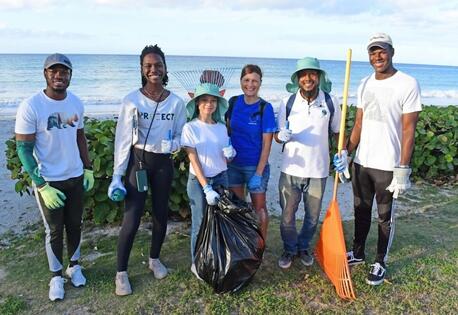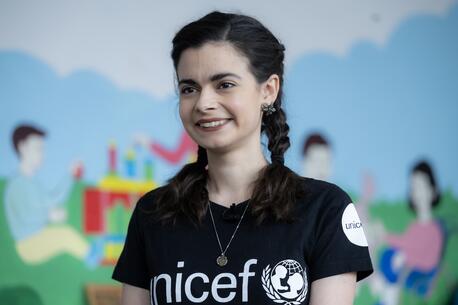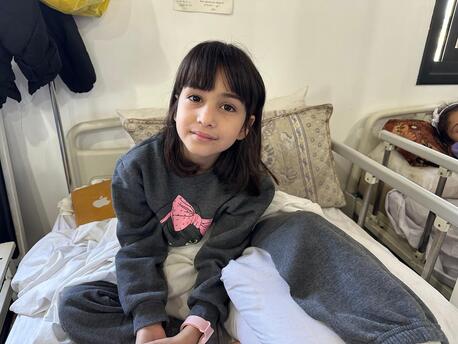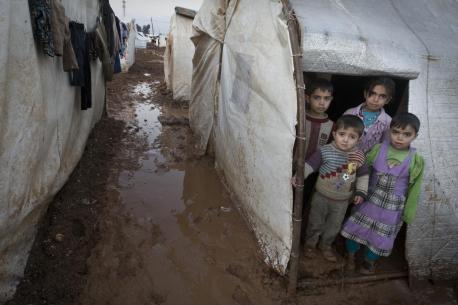
Five Things You Can Do to Help Children in Crisis
More than 1 in 10 of the world's children live in places affected by armed conflict.
An unprecedented number of children are facing increasingly complex and destructive conflicts, natural disasters like floods and hurricanes, and other emergencies like West Africa's Ebola crisis. More than 230 million children live in areas affected by armed conflict, countries like Syria, the Central African Republic, South Sudan and Ukraine. Crises like these place children in extraordinary danger of violence, hunger, disease and abuse.
Here are five things you can do to help:
1. Donate to the U.S. Fund for UNICEF's Emergency Response Fund.
2. Sign a petition to U.S. leaders, encouraging continued support of UNICEF.
3. Teach your children and friends to become global citizens with these free resources:
- TeachUNICEF's Armed Conflict topic page offers a variety of lessons, readings and videos, including: Martha’s Story: The Impact of Armed Conflict (Grades 6-8 Unit and Grades 9-12 Unit) and Children in a World of Conflict Activity Sheet.
- Student magazines and lesson activities for teachers on Syria's No Lost Generation.
4. Volunteer to support UNICEF from within the United States.
5. Sign up to our emails for the latest emergency updates.
UNICEF is there for children before, during and after emergencies, responding to hundreds of humanitarian situations in 2014 and helping to:
- treat 1.8 million children for severe acute malnutrition
- provide 2 million children with access to education
- vaccinate 16 million children against measles
- deliver social and emotional support to 1.8 million children
- provide 18 million people with access to clean drinking water
- supply more than 4,000 tons of essential supplies to Ebola-affected countries, the largest supply response in UNICEF's history
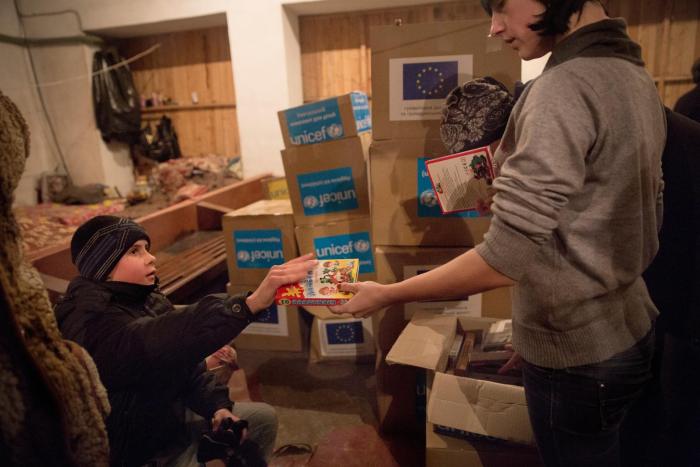
Ukraine: Relief supplies are distributed inside a bomb shelter in Donetsk.
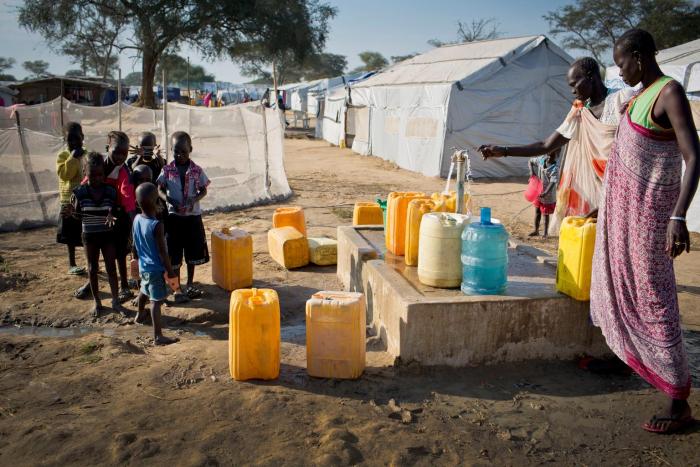
South Sudan: Women use a water point installed by UNICEF in a displacement camp in Bor.
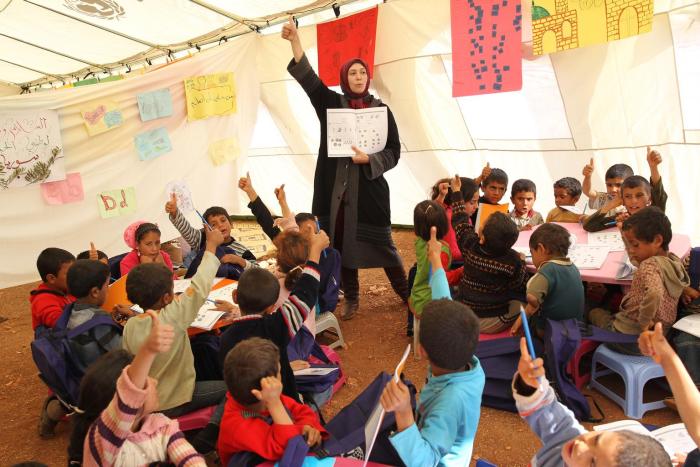
Lebanon: Syrian refugee children learn inside a tent classroom, provided by UNICEF, in an informal settlement in the eastern Bekaa Valley.
Thank you for your dedication to supporting the world's children.
Photo credits: © UNICEF/NYHQ2014-0003/Diffidenti; © UNICEF/NYHQ2014-3503/Volpi; © UNICEF/UNI176399/Holt; © UNICEF/NYHQ2013-0941/Haidar.
